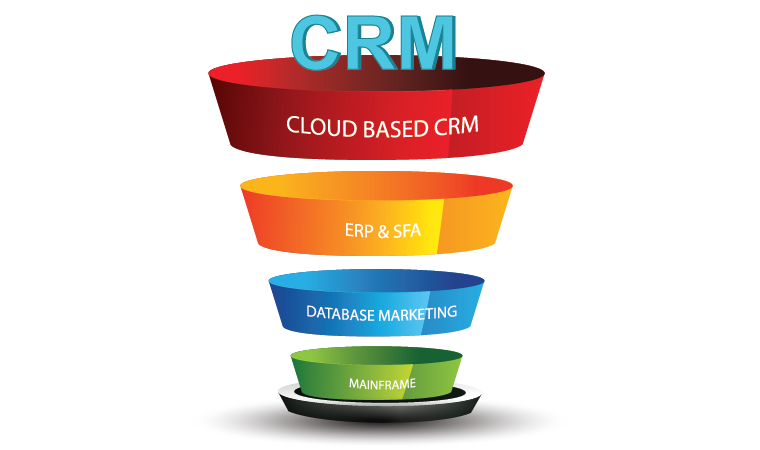The Evolution of CRM Software: From Humble Beginnings to Game-Changing Technology
The Evolution of CRM Software: From Humble Beginnings to Game-Changing Technology

The Evolution of CRM Software: From Humble Beginnings to Game-Changing Technology
Are you a sales superstar, a marketing maestro, or a customer service guru? If so, you’ve likely heard of CRM software – the secret sauce that helps businesses like yours build strong relationships with customers, streamlines processes, and boosts sales.
But have you ever wondered how CRM software came to be? Let’s take a fascinating journey through the evolution of CRM software, from its early days as a simple contact management tool to the sleek, AI-powered platforms of today.
The Early Days: 1990s-2000s
In the 1990s, the term "CRM" was first coined, but it was far from the powerful software we know today. Back then, CRM was more about managing contacts and sales leads than building genuine customer relationships.
One of the pioneers of CRM software was a company called Siebel Systems, founded in 1993. Siebel’s software allowed businesses to manage contacts, accounts, and opportunities, but it was mainly geared towards large enterprises.
Around the same time, other companies started developing their own CRM solutions. These early platforms were often clunky, expensive, and not exactly user-friendly.
The Rise of Cloud-Based CRM: 2000s-2010s
Fast-forward to the 2000s, when cloud computing started to gain traction. This marked a significant turning point in the evolution of CRM software.
In 2006, a young company called Salesforce.com (now Salesforce) revolutionized the CRM landscape by introducing a cloud-based platform. This innovation made CRM software more accessible, affordable, and user-friendly.
Salesforce’s cloud-based CRM allowed businesses of all sizes to manage contacts, accounts, and sales data from anywhere, at any time. This flexibility and scalability opened up new opportunities for businesses to engage with customers in a more meaningful way.

The Social Media Era: 2010s-Present
The rise of social media in the 2010s transformed the way businesses interact with customers. People started sharing their experiences, opinions, and feedback online, creating a treasure trove of data for businesses to tap into.
To adapt to this shift, CRM software began incorporating social media integration, sentiment analysis, and content management. This enabled businesses to monitor customer conversations, respond promptly, and create targeted marketing campaigns.
The AI and Machine Learning Revolution: Present Day
Today, CRM software is more sophisticated than ever. The integration of artificial intelligence (AI) and machine learning (ML) has taken CRM to the next level.
AI-powered CRM platforms can:
- Analyze vast amounts of customer data to predict behavior and preferences
- Automate routine tasks, freeing up staff to focus on high-value activities
- Provide real-time insights and recommendations to improve customer engagement
- Enhance customer experience through personalized interactions
Modern CRM: A Game-Changer for Businesses
So, what does modern CRM software look like? Here are some key features that make it a game-changer for businesses:
- Omnichannel Engagement: Customers can interact with your business through multiple channels – social media, phone, email, chatbots – and expect seamless experiences across all platforms.
- Personalization: CRM software helps businesses create tailored experiences for each customer, based on their preferences, behavior, and purchase history.
- Predictive Analytics: AI-powered CRM platforms analyze customer data to predict churn, identify new sales opportunities, and forecast revenue.
- Automation: CRM software automates routine tasks, streamlining processes and freeing up staff to focus on high-value activities.
- Collaboration: Modern CRM platforms enable teams to collaborate more effectively, share knowledge, and provide a unified customer experience.
The Future of CRM: Trends to Watch
What’s on the horizon for CRM software? Here are some trends to watch:
- Voice-Activated CRM: The rise of voice assistants like Alexa and Siri will lead to more voice-activated CRM interactions.
- AR and VR: Augmented reality (AR) and virtual reality (VR) will revolutionize customer experiences, enabling immersive interactions and simulations.
- Blockchain CRM: Blockchain technology will increase transparency and security in CRM software, enabling secure data sharing and authentication.
- Autonomous CRM: AI-powered CRM platforms will become even more autonomous, automating complex decision-making processes and optimizing customer experiences.
Conclusion
The evolution of CRM software has come a long way since its humble beginnings. From simple contact management to AI-powered platforms, CRM has transformed the way businesses interact with customers.
As technology continues to advance, we can expect even more exciting innovations in the world of CRM. Whether you’re a sales rockstar, a marketing guru, or a customer service expert, one thing is clear: CRM software is here to stay – and it’s going to change the game for businesses of all sizes.
What’s your favorite CRM feature? Share your thoughts in the comments below!
